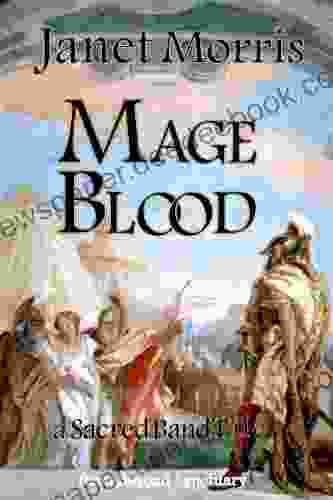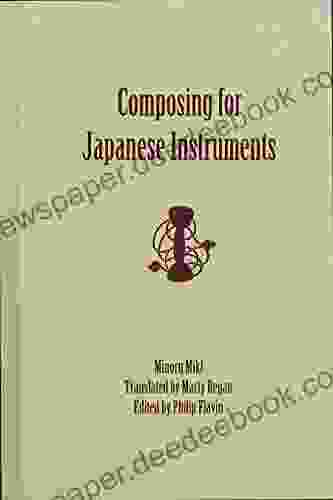Composing for Japanese Instruments: An Exploration of Musical Aesthetics and Techniques for the Koto, Shamisen, and Shinobue

<meta name="viewport" content="width=device-width, initial-scale=1.0"> <meta name="keywords" content="Composing for Japanese Instruments, Koto, Shamisen, Shinobue, Japanese Music, Asian Music, Music Theory, Composition Techniques, Musical Aesthetics, Japanese Culture"> <link rel="stylesheet" href="style.css"> Japanese music holds a captivating charm, with its distinct musical instruments and captivating melodies. Among these instruments, the koto, shamisen, and shinobue stand out for their expressive qualities and rich cultural heritage. Composing for these instruments requires a deep understanding of their unique characteristics and the musical aesthetics they embody. This article delves into the world of Japanese instrument composition, exploring the history, techniques, and musical aesthetics of the koto, shamisen, and shinobue. <h2>The Koto: A Graceful Melody</h2> <figure> <img class="EzPd lvGO lmP7 dy2O" alt="A Beautiful Japanese Koto, A Plucked String Instrument With 13 Strings Composing For Japanese Instruments (Eastman Studies In Music 57)" width="1360" height="900" src="https://tse2.mm.bing.net/th?q=Beautiful-Japanese-Koto-Plucked-String-Instrument-With-13-Strings&w=672&c=7&rs=1&p=t0&dpr=1&pid=1.7&mkt=en-US&adlt=on"> </figure> The koto, a plucked string instrument, has captivated Japanese hearts for centuries. With its elongated body and 13 strings, the koto produces a gentle, melancholic sound that evokes images of serene landscapes and flowing streams. Composing for the koto requires an understanding of its unique characteristics. <h3>Techniques for Koto Composition</h3> * **Kumiodori (Joined Playing):** This technique involves playing two or more kotos together, creating intricate and harmonious melodies. * **Gyakudori (Reversed Playing):** A technique where the strings are played in reverse order, producing a distinctive, ethereal effect. * **Kanamono (Plucking Ornaments):** Small metal ornaments placed under the strings enhance the resonance and add a percussive element. <h3>Musical Aesthetics of the Koto</h3> * **Yo-In-Yo (Yin-Yang Principle):** The koto's sound embodies the balance of yin (soft, feminine) and yang (hard, masculine) qualities. * **Ma (Silence):** Silence plays a crucial role in koto music, allowing the notes to linger and create a sense of spaciousness. * **Wabi-Sabi (Imperfection):** Koto music embraces the beauty of imperfection, finding elegance in the slight variations of pitch and tone. <h2>The Shamisen: A Dynamic Voice</h2> <figure> <img class="EzPd lvGO lmP7 dy2O" alt="A Shamisen, A Three Stringed Plucked Instrument With A Distinctive Sound Composing For Japanese Instruments (Eastman Studies In Music 57)" width="1360" height="900" src="https://tse2.mm.bing.net/th?q=Shamisen-Three-Stringed-Plucked-Instrument-With-Distinctive-Sound&w=672&c=7&rs=1&p=t0&dpr=1&pid=1.7&mkt=en-US&adlt=on"> <figcaption>The shamisen, known for its versatility and expressive range.</figcaption> </figure> The shamisen, a three-stringed plucked instrument, is renowned for its dynamic and expressive sound. Its versatility allows it to accompany various genres, from traditional folk songs to contemporary pop. Composing for the shamisen requires an understanding of its unique techniques and musical aesthetics. <h3>Techniques for Shamisen Composition</h3> * **Bachi (Plectra):** The shamisen is played with a large plectrum (bachi),which can be struck, flicked, or scraped to create a wide range of sounds. * **Sawari (Vibrato):** Vibrato is achieved by gently rocking the shamisen's neck while playing, adding depth and expressiveness to the melodies. * **Kakegoe (Vocal Interjections):** Singers accompanying the shamisen often use vocal interjections to emphasize rhythms and add an emotional dimension. <h3>Musical Aesthetics of the Shamisen</h3> * **Jiuta (Narrative Song):** The shamisen is closely associated with jiuta, a traditional narrative song form that emphasizes storytelling and emotional expression. * **Enso (Circle):** Shamisen music often embodies the concept of enso, a circular shape symbolizing movement and continuity. * **Mono no Aware (Pathos):** Shamisen music frequently evokes a sense of pathos (mono no aware),conveying the transient nature of beauty and the bittersweetness of life. <h2>The Shinobue: A Haunting Breath</h2> <figure> <img class="EzPd lvGO lmP7 dy2O" alt="A Shinobue, A Japanese Bamboo Flute With A Haunting And Evocative Sound Composing For Japanese Instruments (Eastman Studies In Music 57)" width="1360" height="900" src="https://tse2.mm.bing.net/th?q=Shinobue-Japanese-Bamboo-Flute-With-Haunting-And-Evocative-Sound&w=672&c=7&rs=1&p=t0&dpr=1&pid=1.7&mkt=en-US&adlt=on"> </figure> The shinobue, a bamboo flute, is known for its haunting and evocative sound. Its simple construction belies its expressive capabilities, making it a favorite among composers seeking to create atmospheric and meditative pieces. Composing for the shinobue requires an understanding of its unique techniques and musical aesthetics. <h3>Techniques for Shinobue Composition</h3> * **Embouchure:** The shinobue's sound is controlled by the player's embouchure, which shapes the airflow and creates different timbres. * **Vibrato:** Subtle vibrato can be achieved by gently rocking the shinobue while playing, adding depth and expressiveness to the melodies. * **Mare (Breath Modulation):** Mare refers to the use of breath to create dynamic effects and enhance the expressiveness of the music. <h3>Musical Aesthetics of the Shinobue</h3> * **Yugen (Mystery and Depth):** Shinobue music often evokes a sense of mystery and depth, inviting listeners to explore the profound and intangible. * **Koky</body></html>5 out of 5
| Language | : | English |
| File size | : | 59382 KB |
| Text-to-Speech | : | Enabled |
| Screen Reader | : | Supported |
| Enhanced typesetting | : | Enabled |
| Print length | : | 452 pages |
Do you want to contribute by writing guest posts on this blog?
Please contact us and send us a resume of previous articles that you have written.
 Book
Book Novel
Novel Page
Page Chapter
Chapter Text
Text Story
Story Genre
Genre Reader
Reader Library
Library Magazine
Magazine Paragraph
Paragraph Sentence
Sentence Shelf
Shelf Foreword
Foreword Preface
Preface Annotation
Annotation Footnote
Footnote Tome
Tome Library card
Library card Narrative
Narrative Biography
Biography Autobiography
Autobiography Reference
Reference Dictionary
Dictionary Thesaurus
Thesaurus Character
Character Card Catalog
Card Catalog Borrowing
Borrowing Stacks
Stacks Study
Study Academic
Academic Rare Books
Rare Books Special Collections
Special Collections Literacy
Literacy Dissertation
Dissertation Storytelling
Storytelling Reading List
Reading List Book Club
Book Club Theory
Theory Textbooks
Textbooks Gordon J Goldberg
Gordon J Goldberg William Hickling Prescott
William Hickling Prescott Francesco Belviso
Francesco Belviso Lorenzo Taffarel
Lorenzo Taffarel Kirill Kolodiazhnyi
Kirill Kolodiazhnyi Laura Van Den Berg
Laura Van Den Berg Hallett German
Hallett German John Rentoul
John Rentoul Ashwin Pajankar
Ashwin Pajankar Sharon Brant
Sharon Brant V S Naipaul
V S Naipaul Ethan Mordden
Ethan Mordden Wendy Gorton
Wendy Gorton Renee Olivier
Renee Olivier C A Bayly
C A Bayly Thomas Cleary
Thomas Cleary Lewis Invest
Lewis Invest Marc Winn
Marc Winn Delores Johnson
Delores Johnson Edith Martin
Edith Martin
Light bulbAdvertise smarter! Our strategic ad space ensures maximum exposure. Reserve your spot today!

 Jorge Luis BorgesSeeing Red: An Unflinching Journey of Self-Discovery Through Art and Trauma
Jorge Luis BorgesSeeing Red: An Unflinching Journey of Self-Discovery Through Art and Trauma
 Mario SimmonsMage Blood Sacred Band of Stepsons: Unraveling the Secrets of the Ancient...
Mario SimmonsMage Blood Sacred Band of Stepsons: Unraveling the Secrets of the Ancient... Henry HayesFollow ·17.2k
Henry HayesFollow ·17.2k Caleb CarterFollow ·15.4k
Caleb CarterFollow ·15.4k Matthew WardFollow ·11.5k
Matthew WardFollow ·11.5k Eli BlairFollow ·18.6k
Eli BlairFollow ·18.6k Maurice ParkerFollow ·12.9k
Maurice ParkerFollow ·12.9k Christopher WoodsFollow ·4.2k
Christopher WoodsFollow ·4.2k Walt WhitmanFollow ·12.3k
Walt WhitmanFollow ·12.3k Darius CoxFollow ·7.3k
Darius CoxFollow ·7.3k

 Elias Mitchell
Elias Mitchell50 Amazing Color Paintings Of Pierre Paul Prud'Hon French...
Pierre Paul Prud'Hon (1758-1823) was a French...

 Owen Simmons
Owen SimmonsAgenda 21: A Comprehensive Guide to Glenn Beck's Baseless...
Agenda 21 is a...

 Mark Twain
Mark TwainExploring the Intricate Art of Choreography: Craft,...
Choreography, an art form that combines...

 Robert Heinlein
Robert HeinleinWhere Do Hurricanes, Typhoons, and Cyclones Come From?
A 2nd Grade Science...

 Isaiah Price
Isaiah PriceThe Profound Place of Music in the Australian Aboriginal...
: Unveiling the Heartbeat...
5 out of 5
| Language | : | English |
| File size | : | 59382 KB |
| Text-to-Speech | : | Enabled |
| Screen Reader | : | Supported |
| Enhanced typesetting | : | Enabled |
| Print length | : | 452 pages |









